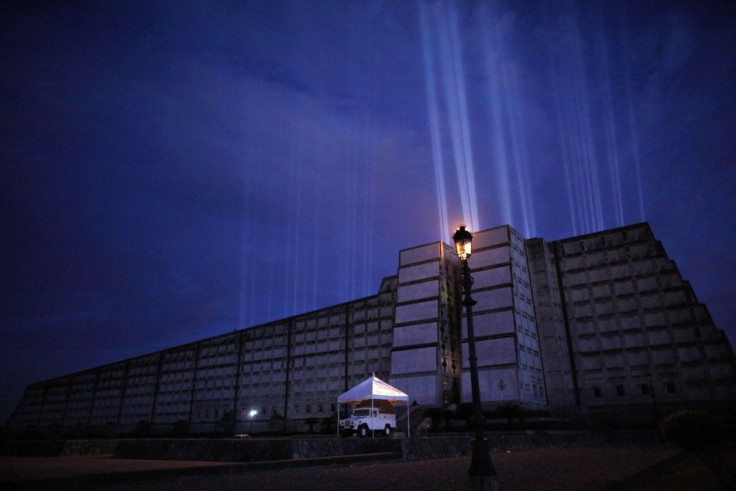Columbus Day Mystery: Where are Christopher Columbus’ Bones?

Christopher Columbus died in Valladolid, Spain on May 20, 1506, but his bones went on a journey not unlike the one he himself took while he was still alive.
In honor of Columbus Day 2011, here's a look at an age old question: where are Christopher Columbus' bones?
The question is not so easily answered, so we'll begin at the end of Columbus' life.
Columbus suffered through a long terminal illness that was first apparent on his third voyage eight years before his death at the age of 54. His son officially reported the death as gout, though in those times, the name gout was commonly used for anything that caused joint pain.
Recent research suggests that a more likely cause of death was a rare tropical disease called Reiter's Syndrome, or reactive arthritis.
However he died, Columbus perhaps travelled more in death than in life. After death, Columbus' body underwent excarnation where the flesh was removed so that only his bones remained.
Columbus was buried without fanfare with only a handful of people in attendance. Despite his wishes to be buried in La Espanola (the Caribbean island of Hispaniola), he was buried in a small monastery at Valladolid, Spain with the chains he wore upon his arrest after the third voyage to the New World.
After three years, Columbus' bones were moved to the monastery of La Cartuja in Seville, in accordance with his eldest son Diego's wishes. Diego died in 1526 and was buried beside his father. However, in 1537, Diego's widow, Maria de Rojas y Toledo, sent both Diego and Christopher Columbus' bones to Santo Domingo (in present day Dominican Republic) for burial.
Some speculate that the bones were not moved until 1541 when the Cathedral of Santo Domingo was completed. Either way, the bones were certainly moved to Hispaniola and buried under the right side of the alter in the cathedral.
Columbus rested in peace for over two centuries in the place he wished to remain.
Here's where things begin to get confusing.
In 1795, the French captured the island of Hispaniola from Spain. Though he died in relative obscurity, by the late 1700's, Columbus's remains were viewed as a national treasure by Spain. They did not want the bones in the hands of the French, so relying on old records, dug up his remains and relocated them to Havana, Cuba.
Yet, in 1877, workers restoring the cathedral in Santo Domingo came across a box containing human remains under the left side of the altar. The box bore Columbus' name and an urn bore the inscription The illustrious and distinguished male, Don Christopher Columbus.
Many speculated that the bones sent to Cuba were in fact those of Diego and that there must have been a mix-up with the directions left and right as the sides of the alter depended upon the direction one was facing at the time.
When the Spaniards were kicked out of Cuba in 1898, Columbus' supposed remains were moved back to the Cathedral of Seville where they were placed on an elaborate catafalque.
Columbus' tomb in the cathedral of Seville was guarded by four statues of kings, as it remains today.
So where are the bones of Christopher Columbus?
Researchers in Spain claimed in 2006 that they had definitive proof that the explorer's bones were in Seville. A forensic team led by Spanish geneticist Jose Antonio Lorente compared DNA from bone fragments that Spain says are from the explorer (and are buried in Seville) with DNA extracted from remains known to be from his brother Diego (not to be confused with his son).
There is absolute matchup between the mitochondrial DNA we have studied from Columbus' brother and Christopher Columbus, Marcial Castro, a Seville-area historian and high school teacher who was the mastermind behind the project, said at the time.
Juan Bautista Mieses, the director of the Columbus Lighthouse - a cross-shaped building several blocks long in Santo Domingo - dismissed the researchers' findings and insisted that Columbus was indeed buried in the Dominican Republic.
The remains have never left Dominican territory, Bautista said in a statement.
The truth may not be so black and white. Portions of Columbus' bones may in fact be in both the continent where he began his journey, and the New World he explored.
For now, the mystery remains unsolved.
READ ALSO:
Columbus Day 2011: What Would Columbus' First Voyage Look Like Today?
Columbus Day Parade Route, Events & Performances in NYC
© Copyright IBTimes 2025. All rights reserved.






















